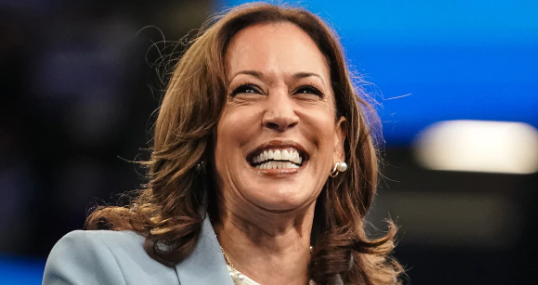Editorial Column
How Americans Choose Candidates In Their Elections

By Grace Ihesiulo
- Elections in the United States are held for government officials at the federal, state, and local levels.
At the federal level, the nation’s head of state, the president, is elected indirectly by the people of each state, through an Electoral College.
These electors almost always vote with the popular vote, in their state. All members of the federal legislature, the Congress, are directly elected by the people of each state.
Read Also: Police Rescue 10 Kidnapped Traders In Ondo
There are many elected offices at state level, each state having at least an elective governor and legislature.
There are also elected offices at the local level, in counties, cities, towns, townships, boroughs, and villages; as well as for special districts and school districts, which may transcend county and municipal boundaries.
According to a study by a political scientist, Jennifer Lawless, there were 519,682 elected officials in the United States as of 2012.
While the United States Constitution does set parameters for the election of federal officials, state law, it not federal that regulates most aspects of elections in the U.S., including primaries, the eligibility of voters (beyond the basic constitutional definition), the running of each state’s electoral college, as well as the running of state and local elections.
All elections—federal, state, and local—are administered by the individual states.
The restriction and extension of voting rights to different groups has been a contested process throughout United States history.
The federal government has also been involved in attempts to increase voter turnout, by measures such as the National Voter Registration Act of 1993.
The financing of elections has also long been controversial, because private sources make up substantial amounts of campaign contributions, especially in federal elections.
Voluntary public funding for candidates willing to accept spending limits, was introduced in 1974 for presidential primaries and elections.
The Federal Elections Commission, created in 1975 by an amendment to the Federal Election Campaign Act, has the responsibility to disclose campaign finance information, to enforce the provisions of the law such as the limits and prohibitions on contributions, and to oversee the public funding of U.S. presidential elections.
Voting Methods
The most common method used in U.S. elections is the first-past-the-post system, where the highest-polling candidate wins the election.
Under this system, a candidate only requires a plurality of votes to win, rather than an outright majority.
Some may use a two-round system, where if no candidate receives a required number of votes, then, there is a runoff between the two candidates with the most votes.
Since 2002, several cities have adopted instant-runoff voting in their elections. Voters rank the candidates in order of preference rather than voting for a single candidate.
If a candidate secures more than half of votes cast, that candidate wins. Otherwise, the candidate with the fewest votes is eliminated.
Ballots assigned to the eliminated candidate are recounted and assigned to those of the remaining candidates who rank next in order of preference on each ballot.
This process continues until one candidate wins by obtaining more than half of the votes.
In 2016, Maine became the first state to adopt instant-runoff voting (known in the state as ranked-choice voting) statewide for its elections, although due to state constitutional provisions, the system is only used for federal and later, presidential elections and state primaries.
Eligibility
The eligibility of an individual for voting is set out in the constitution and also regulated at state level.
The constitution states that suffrage cannot be denied on grounds of race or colour, sex, or for citizens up to eighteen years of age or older. Beyond these basic qualifications, it is the responsibility of state legislatures to regulate voter eligibility.
Some states ban convicted criminals, especially felons, from voting for a fixed period of time or indefinitely.
The number of American adults who are currently or permanently ineligible to vote due to felony convictions is estimated to be 5.3 million.
Some states also have legacy constitutional statements barring legally declared incompetent from voting; such references are generally considered obsolete and are being considered for review or removal where they appear.
An additional 4.3 million American citizens lack the right to vote in Congressional elections because they reside in Washington D.C., Puerto Rico and other U.S. territories that are not parts of any of the 50 U.S. states.
Voter registration
While the federal government has jurisdiction over federal elections, most election laws are decided at the state level.
All U.S. states except North Dakota require that citizens who wish to vote, be registered.
Traditionally, voters had to register at state offices to vote, but in the mid-1990s, efforts were made by the federal government to make registering easier, in an attempt to increase turnout.
The National Voter Registration Act of 1993 (the “Motor Voter” law) required state governments that receive certain types of federal funding to make the voter registration process easier by providing uniform registration services through drivers’ license registration centers, disability centres, schools, libraries, and mail-in registration.
Other states allow citizens same-day registration on Election Day.
An estimated 50 million Americans are unregistered.
It has been reported that registering to vote poses greater obstacles for low-income citizens, racial minorities and linguistic minorities, Native Americans, and persons with disabilities.
International election observers have called on authorities in the U.S. to implement measures to remediate the high number of unregistered citizens.
In many states, citizens registering to vote may declare an affiliation with a political party.
This declaration of affiliation does not cost money, and does not make the citizen a dues-paying member of a party.
A party cannot prevent a voter from declaring his or her affiliation with them, but it can refuse requests for full membership.
In some states, only voters affiliated with a party may vote in that party’s primary elections.
Declaring a party affiliation is never required.
Some states, including Georgia, Michigan, Minnesota, Virginia, Wisconsin, and Washington, practice non-partisan registration.
Absentee and mail voting
Voters unable or unwilling to vote at polling stations on Election Day may vote via absentee ballots, depending on state law.
Originally these ballots were for people who could not go to the polling place on election day.
Now, some states let them be used for convenience, but state laws still call them absentee ballots.
Absentee ballots can be sent and returned by mail, or requested and submitted in person, or dropped off in locked boxes.
About half of the states and territories allow “no excuse absentee,” where no reason is required to request an absentee ballot; others require a valid reason, such as infirmity or travel.
Some states let voters with permanent disabilities apply for permanent absentee voter status, and some other states allow all citizens to apply for permanent status, so that they will automatically receive an absentee ballot for each election.
Otherwise a voter must request an absentee ballot before the election takes place.
In Colorado, Hawaii, Oregon, Utah and Washington states, all ballots are delivered through the mail; in many other states, there are counties or certain small elections where everyone votes by mail.
Americans living outside the United States may register and vote under the Uniformed and Overseas Citizens Absentee Voting Act (UOCAVA).
Almost half of the states require these ballots to be returned by mail. Other states allow mail along with some combination of fax, or email; four states allow a web portal.
A significant measure to prevent some types of fraud has been to require the voter’s signature on the outer envelope, which is compared to one or more signatures on file before taking the ballot out of the envelope and counting it.
Not all states have standards for signature review.
There have been concerns that signatures are improperly rejected from young and minority voters at higher rates than others, with no or limited ability of voters to appeal the rejection.
For other types of errors, experts estimate that while there is more fraud with absentee ballots than in-person voting, it has affected only a few local elections.
One documented trend is that in-person votes and early votes, they are more likely to lean to the Republican Party, while the provisional ballots, which are counted later, trend to the Democratic Party.
This phenomenon is known as blue shift, and has led to situations where Republicans won on election night only to be overtaken by Democrats after all votes were counted.
Foley did not find that mail-in or absentee votes favoured either party.
Early voting
Main article: Early voting § United States
Early voting is a formal process where voters can cast their ballots prior to the official Election Day.
Early voting in person is allowed in 33 states and in Washington, D.C., with no excuse required.
Voting equipment
Further information: Electronic voting in the United States and Voting machine
Prevalence of voting technology in the US in 1980 and 2008.
Voting technology 1980 prevalence 2008 prevalence
The earliest voting in the US was through paper ballots that were hand-counted.
By the late 1800s, paper ballots printed by election officials were nearly universal.
By 1980, 10% of American voters used paper ballots that were counted by hand, which dropped below 1% by 2008.
Mechanical voting: machines were first used in the US in the 1892 elections in Lockport, New York.
The state of Massachusetts was one of the first states to adopt lever voting machines, doing so in 1899, but the state’s Supreme Judicial Court ruled their usage unconstitutional in 1907.
Lever machines grew in popularity despite controversies, with about two-thirds of votes for president in the 1964 United States presidential election cast with lever machines.
Lever machine use, declined to about 40% of votes in 1980, then 6% in 2008.
Punch card voting equipment was developed in the 1960s, with about one-third of votes cast with punch cards in 1980.
New York was the last state to phase out lever voting in response to the 2000 Help America Vote Act (HAVA), which allocated funds for the replacement of lever machine and punch card voting equipment.
New York replaced its lever voting with optical scanning in 2010.
In the 1960s, technology was developed which enabled paper ballots filled with pencil or ink to be optically scanned rather than hand-counted.
In 1980, about 2% of votes used optical scanning; this increased to 30% by 2000 and 60% by 2008.
In the 1970s, the final major voting technology for the US was developed, the DRE voting machine.
In 1980, less than 1% of ballots were cast with DRE. Prevalence grew to 10% in 2000, then peaked at 38% in 2006.
Because DREs are fully digital, with no paper trail of votes, backlash against them caused prevalence to drop to 33% in 2010.
The voting equipment used by a given US county is related to the county’s historical wealth.
A county’s use of punch cards in the year 2000 was positively correlated with the county’s wealth in 1969, when punch card machines were at their peak of popularity.
Counties with higher wealth in 1989 were less likely to still use punch cards in 2000.
This supports the idea that punch cards were used in counties that were well-off in the 1960s, but whose wealth declined in the proceeding decades.
Counties that maintained their wealth from the 1960s onwards could afford to replace punch card machines as they fell out of favor.
Levels of election
Federal elections
The United States has a presidential system of government, which means that the executive and legislature are elected separately.
Article II of the United States Constitution requires that the election of the U.S. president by the Electoral College must occur on a single day throughout the country; Article I established that elections for Congressional offices, however, can be held at different times.
Congressional and presidential elections take place simultaneously every four years, and the intervening Congressional elections, which take place every two years, are called midterm elections.
The constitution states that members of the United States House of Representatives must be at least 25 years old, a citizen of the United States for at least seven years, and be a (legal) inhabitant of the state he or she represents.
Senators must be at least 30 years old, a citizen of the United States for at least nine years, and be a (legal) inhabitant of the state he represents.
The president and vice president must be at least 35 years old, natural born citizens of the United States and residents in the United States for at least fourteen years.
It is the responsibility of state legislatures to regulate the qualifications for a candidate appearing on a ballot paper, although in order to get onto the ballot, a candidate must often collect a legally defined number of signatures.
Presidential elections
Main articles: United States presidential election and Electoral College (United States)
The president and the vice president are elected together in a presidential election.
It is an indirect election, with the winner being determined by votes cast by electors of the Electoral College.
In modern times, voters in each state select a slate of electors from a list of several slates designated by different parties or candidates, and the electors typically promise in advance to vote for the candidates of their party (whose names of the presidential candidates usually appear on the ballot rather than those of the individual electors).
The winner of the election is the candidate with at least 270 Electoral College votes.
It is possible for a candidate to win the electoral vote, and lose the (nationwide) popular vote (receive fewer votes nationwide than the second ranked candidate).
Prior to ratification of the Twelfth Amendment to the United States Constitution (1804), the runner-up in a presidential election[26] became the vice president.
Electoral College votes are cast by individual states and a group of electors; each elector casts one electoral college vote.
Until the Twenty-third Amendment to the United States Constitution of 1961, citizens from the District of Columbia did not have representation or electors in the electoral college.
In modern times, with electors usually committed to vote for a party candidate in advance, electors that vote against the popular vote in their states are called faithless electors, and occurrences are rare.
State law regulates how states cast their electoral college votes. In all states except Maine and Nebraska, the candidate that wins the most votes in the state receives all its electoral college votes (a “winner takes all” system).
From 1969 in Maine, and from 1991 in Nebraska, two electoral votes are awarded based on the winner of the statewide election, and the rest (two in Maine, three in Nebraska) go to the highest vote-winner in each of the state’s congressional districts.
United States presidential elections
Congressional elections: Congress has two chambers, the Senate and the House of Representatives.
Senate elections
The Senate has 100 members, elected for a six-year term in dual-seat constituencies (2 from each state), with one-third being renewed every two years.
The group of the Senate seats that is up for election during a given year is known as a “class”; the three classes are staggered so that only one of the three groups is renewed every two years.
Until the Seventeenth Amendment to the United States Constitution in 1913, states chose how to elect Senators, and they were often elected by state legislatures, not the electorate of states.
United States Senate elections
House of Representatives elections:
The House of Representatives has 435 members, elected for a two-year term in single-seat constituencies.
House of Representatives elections are held every two years on the first Tuesday after November 1 in even years.
Special House elections can occur if a member dies or resigns during a term.
House elections are first-past-the-post elections that elect a Representative from each of 435 House districts that cover the United States.
The non-voting delegates of Washington, D.C., and the territories of American Samoa, Guam, the Northern Mariana Islands, Puerto Rico and the United States Virgin Islands are also elected.
House elections occur every two years, correlated with presidential elections or halfway through a president’s term.
The House delegate of Puerto Rico, officially known as the resident commissioner of Puerto Rico, is elected to a four-year term, coinciding with those of the President.
As the redistricting commissions of states are often partisan and districts are often drawn which benefit incumbents.
An increasing trend has been for incumbents to have an overwhelming advantage in House elections, and since the 1994 election, an unusually low number of seats has changed hands in each election.
Due to gerrymandering, fewer than 10% of all House seats are contested in each election cycle.
Over 90% of House members are reelected every two years, due to lack of electoral competition.
Gerrymandering of the House, combined with the general deficiencies of the first-past-the-post voting system, and divisions inherent in the design of the Senate and of the Electoral College, result in a discrepancy between the percentage of popular support for various political parties and the actual level of the parties’ representation.
In particular, gerrymandering has been found to benefit the Republican Party more than it does to the Democratic Party.
United States House of Representatives elections
State elections
State law and state constitutions, controlled by state legislatures regulate elections at state level and local level.
Various officials at state level are elected.
Since the separation of powers applies to states as well as the federal government, state legislatures and the executive (the governor) are elected separately.
Governors and lieutenant governors are elected in all states, in some states on a joint ticket and in some states, separately, and in different electoral cycles.
The governors of the territories of American Samoa, Guam, the Northern Mariana Islands, Puerto Rico and the United States Virgin Islands are also elected. In some states, executive positions such as Attorney General and Secretary of State are also elected offices.
All members of state legislatures and territorial jurisdiction legislatures are elected.
In some states, members of the state supreme court and other members of the state judiciary are also elected.
Proposals to amend the state constitution are placed on the ballot in some states.
As a matter of convenience and cost saving, elections for many of these states and local offices are held at the same time as either the federal presidential or midterm elections.
There are a handful of states, however, instead holding their elections during odd-numbered “off years.”
United States gubernatorial elections.
Local elections:
At the local level, county and city government positions are usually filled by election, especially within the legislative branch.
The extent to which offices in the executive or judicial branches are elected vary from county-to-county or city-to-city.
Some examples of local elected positions include sheriffs at the county level and mayors and school board members at the city level.
Like state elections, an election for a specific local office may be held at the same time as either the presidential, midterm, or off-year elections.
Advertise or Publish a Story on EkoHot Blog:
Kindly contact us at [email protected]. Breaking stories should be sent to the above email and substantiated with pictorial evidence.
Citizen journalists will receive a token as data incentive.
Call or Whatsapp: 0803 561 7233, 0703 414 5611







